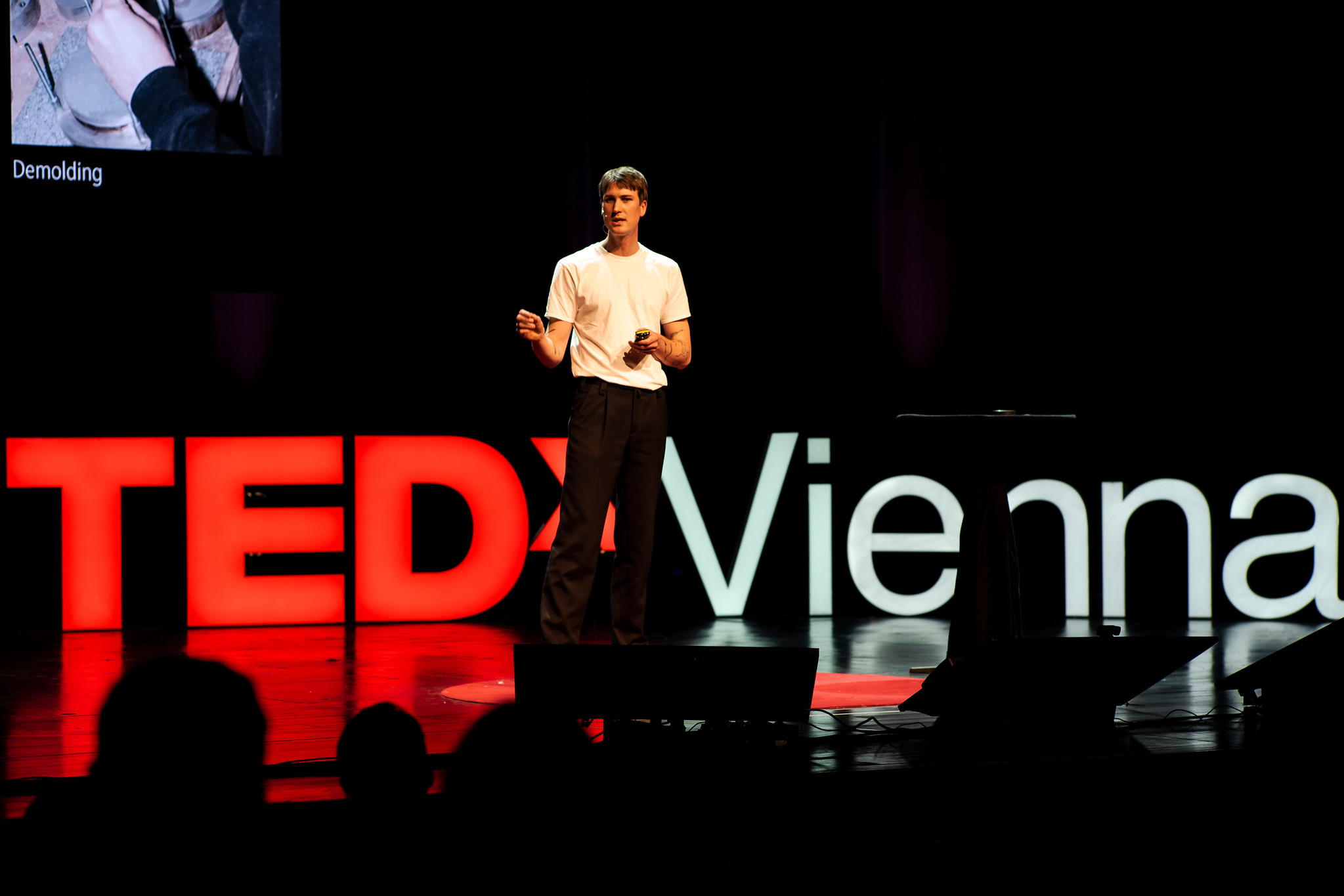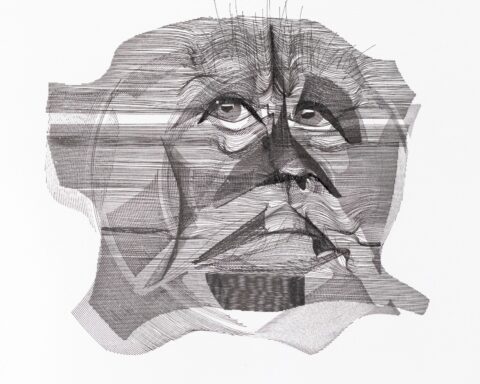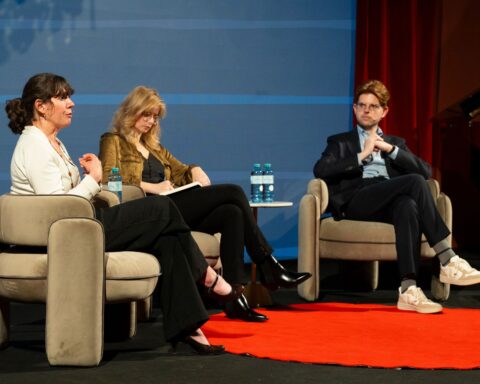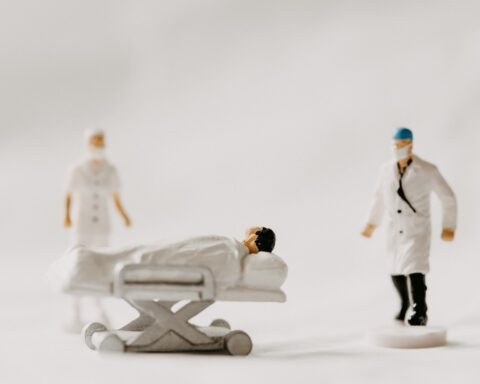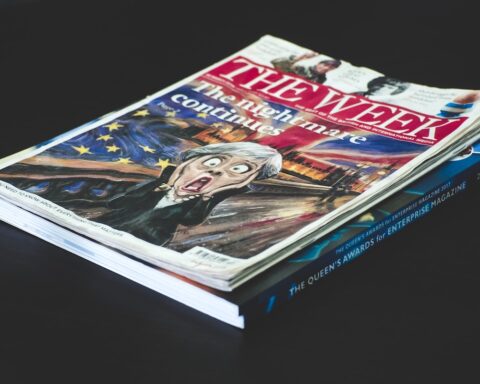Basse Stittgen is a designer that makes use of unconventional materials. One of these is blood and its contradictory meaning, representing both life and death. During his talk, he introduced two of his projects which revolve around the blood of which he creates objects to raise awareness on the invisibility of two issues: the slaughterhouse industry and the stigma HIV-positive patients are facing.
With the first, he sheds light on the disconnection between meat consumption and the process that takes place in order to obtain the final product that consumers find on their supermarket shelves. This, he argues, leads to alienation between humans and animals and therefore he aims to evoke reflection on this matter by creating physically tangible objects such as plates. The second addresses the reduction of people suffering from contagious diseases to their medical status and the stigmatization they face. Basse uses his project to facilitate a space for HIV-positive persons to share their stories and experiences and break the silence on this issue.
After his talk, I had the opportunity to speak with him further about the reception of his art, his approaches to open discourse on these issues, and the impact his work has had on himself on a personal level.
How are you feeling now, right after your talk? It was your first talk, wasn’t it?
Yeah, definitely. It was such a relief, I have to say. It’s like this mix between nervousness and excitement and then trying to focus on the good stuff, the excitement, and then it was really nice afterward. Before, it was super stressful, but I think that’s also this really kind of worthwhile thing to push yourself to jump in the cold water and hopefully feel good afterward.
Your topic was really interesting, and I admire what you’re doing. When I first read about it, I was thinking how it’s so genius. But as you said during your talk, it’s a fairly tabooed topic and a lot of people might feel a little repelled towards it. How do you feel talking to people about it when you’re introducing your projects and ideas?
I think it goes with just what you mentioned, that there’s this kind of negative connotation to it. And what I find is that if you have any kind of experience, it might be more meaningful when you’re not going in with a positive feeling. If you have this preconceived idea that it’s going to be positive, then that’s going to be positive. You’ve got your ideas confirmed, and then you move on, and it was a great time. But if you start from a negative and then try to find the interesting and unseen parts about it, you have to challenge your own bias, and then you have a much more meaningful discourse towards the topic. There’s a process that is not completely predictable.
So, turning around the conversation a little bit?
Yeah, because also if you talk about disgust, you don’t need to learn how to be disgusted, you know? It’s just this very visceral feeling, this reaction that you have. And it’s also really nice because it’s this universal feeling that you can appeal to. Disgust is also really close to fascination. If something’s disgusting, you have to look, although you don’t want to look.
So if you’re able to isolate the fascinating part from something that was initially conceived as disgusting, and if you can focus on that and revolve a narrative around that, that becomes interesting because it reflects back on this initial idea of disgust and then that idea gets challenged by showing the new sides of the same topic. So that’s kind of how it often works, I think.
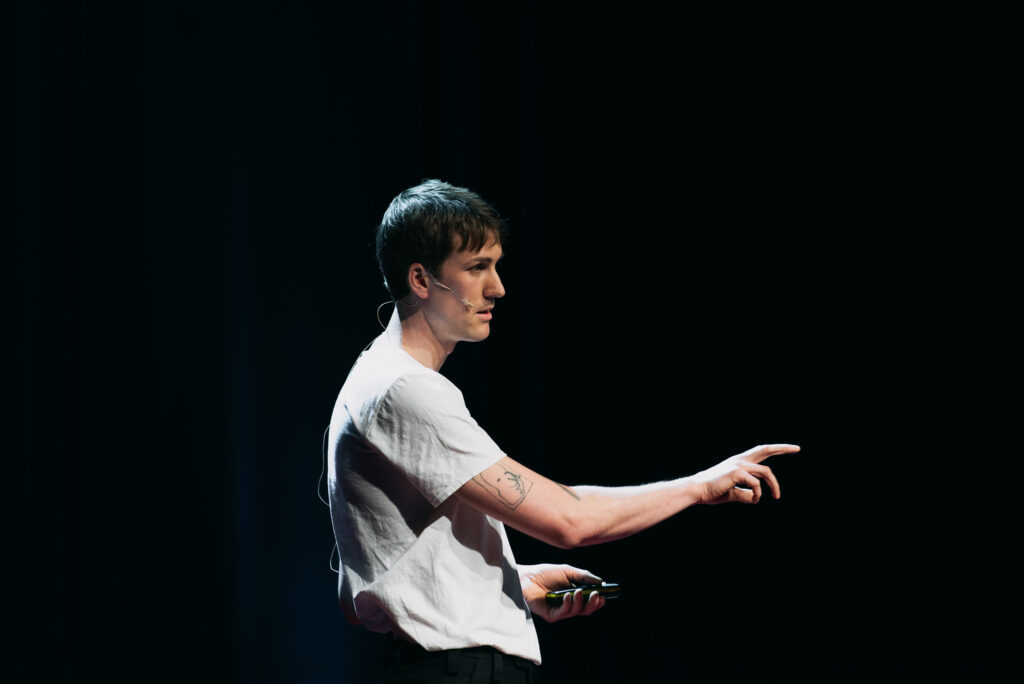
From what I’m hearing now is that you need to make sure once you start having the conversation about this topic to be like “Hold on. I have more to tell.” How do people react initially when you tell them about this? What were your family and friends’ reactions?
I come from this background of loving to work with materials, and blood just became a material at one moment. And that’s very strange because it’s so much more than that. I feel like the first reactions from my family were, “Oh, okay. So he wants to do it. Let’s see.” They are super supportive, so that’s nice.
But yeah, it’s funny because you have all these ideas when you mention blood. And coming back to that, they’re often related to disgust and those rather negative connotations towards blood and its physicality. So we process this big difference between blood contained inside the body and blood outside the body. Inside your body, it has all these metaphorical meanings or mysticism and all these sayings. In all the big religions, blood has such a high symbolic meaning. Basically, inside the body, it represents life. Outside the body, it represents death and that’s super interesting to work around because the objects from animal blood do represent death in a way.
But then with the other project, the collaboration with the people that are HIV positive, blood doesn’t represent death, it represents stigma and fear. And then again, it is not about triggering a fear, but it’s about overcoming fear through immersing yourself into somebody’s story, which is the best way to create empathy I think. Seeing those numbers, you don’t get to see a person alone and I think it’s so important to do that because otherwise, you are losing what’s important before everything – the social aspects.
Speaking of stigma, I stumbled upon a quote by artist Maia Schwartz, “Menstruation is the only blood that is not born from violence, yet it’s the one that disgusts you the most.” Have you ever considered using menstruation blood?
It’s funny that you ask that because I’ve been asked that question many times and I feel like it’s very important as a creator or artist or designer that you also have to be very much aware of your position.
I’m not HIV positive, but I do this project about it. So what is my intention with it? Do I want to just appropriate this narrative to get attention? And then I thought about how the reasons for me to do this project are that I have those people I collaborate with at peer support groups and their support is basically what makes me be okay with doing this work. So I would feel the same about your question. I don’t think it’s my position to make a statement about menstrual blood as a stigma attached to it, but I would definitely work in a collaborative project with somebody to do that.
The nice thing about having developed these projects is that I’m also sharing them. If there are other people that have an idea, I love collaborating on that and seeing how together we can create this narrative. In the project with HIV, I had the tools to create those objects, but then all the meaning comes from the donors, their lives.
Since these projects already involve blood, you don’t want to scandalize the off-door stories. So it really takes ideas to make a new notion for this object which doesn’t confirm the stereotypes and the stigma. And then it becomes interesting because it makes you see something differently.
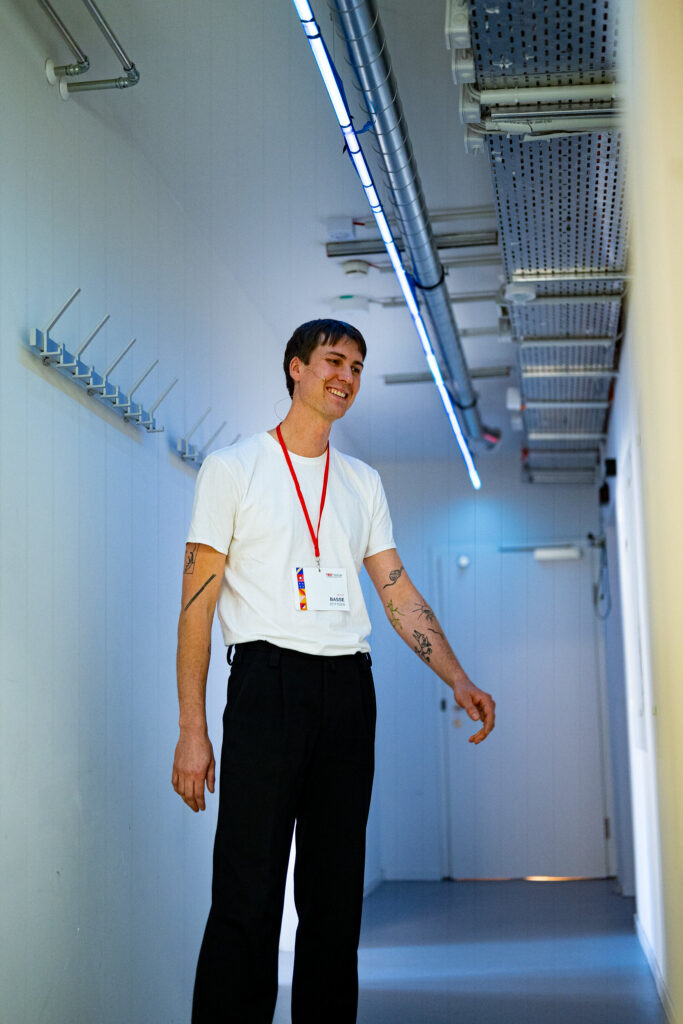
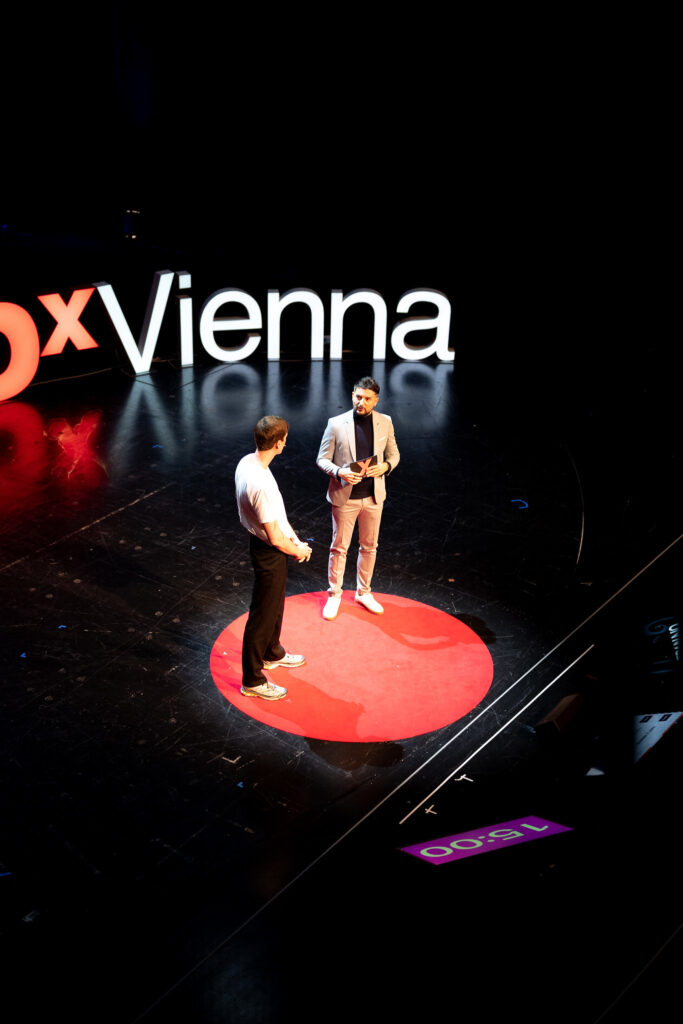
You mention in some interviews that since you started with this project, you reduced your meat consumption. How else has it impacted you since you began?
It really changed me, this work. And sometimes you’re also questioning what is the impact of that? Because you can’t really measure it, it’s not like I made objects out of that much blood and then this amount of waste got reduced. I said in the very beginning that this is not a project about waste, but this is how I saw it in the beginning. And that spoofing is problematic. We don’t know that there’s this blood that is being discarded and nobody sees it. It’s completely invisible. It’s not a project about waste, but how I see the impact is that at least I became vegetarian through this work.
Especially since I had the opportunity to interview the people that are working in those peer support groups. That really moved me because I am also in the conceptual aspect of the work, I would also see myself as the audience with the creation of the object. I’m creating the objects, but since I’m not really creating the meaning, I was also learning. I never interacted or engaged with a person that is living with an infectious disease that has a stigma attached to it. So I was also afraid of the blood, not seeing the person and then doing that really opened my eyes, which is why I want to continue working on this because I think it’s important to listen to those stories. There’s a lot to learn.
What is the reaction of people after they’ve got in touch with your project, with the stories, with the objects that you created? Did you observe any change since you started your project regarding the perception towards blood over the time span in which you’ve been working with it?
What I really liked about working with blood is that there is this fascination towards it. Also for me, since I have a background of making the objects and the craft that is involved. There’s a fascination attached to it that you can have this made out of blood because you wouldn’t expect it. I always notice this fascination part and once that is there, this is somehow the conversation opener to then actually talk about the things that matter. I had mostly positive responses. I do sometimes get hate mail from people that maybe just didn’t take the time to look at the whole project. If you see it, objects made out of discarded blood from slaughterhouses, you might think “What is this now? Next way of how to exploit animals?” and that it’s a supply just for the shock value to you. That’s also why I never wanted to sell the things because you don’t really get to control the narrative because people can buy it with any kind of intention, so it’s always nice to kind of try to keep the integrity of the story. Although I don’t have the illusion that I can control how the work is perceived, of course not. There are still nuances to it.
Some people have told me that they considered becoming vegetarian after seeing the work. I think that’s the nicest thing that has happened. Also in the mirror, I refer to, now I’m 31, and I’ve stopped eating meat and if in a lifetime you eat 11 cows, which doesn’t sound so much, but it’s three tons of beef, and then I stopped for 30 – let’s hope I live a few more years – that’s already a significant amount of animals that are not going to be killed for my consumption. In addition, we eat like 2000 chickens in a lifetime.
I’m not saying we should stop eating meat but just be aware of it. And also, often people think that they can’t change anything as an individual, but exactly as an individual you can if you see that. If you stop eating chicken now halfway through your life, it’s going to be thousands of chickens less killed for your consumption. And I think that’s quite an impact to relate to. That is basically what I want to tell with the project.

Do people react differently when they get to know from which type of blood the objects derive from? What are the differences in their reaction between when objects are made of cow blood and of the blood from people who are HIV positive?
Yeah, definitely. I also never presented the two projects together, to not mix narratives. Now, in the talk, I really wanted to talk about both. It’s just different stories. One is mostly the intention of empowering and breaking the stigma, and the other one is about reflection that I would hope to trigger through the work.
It’s differently perceived because I think the work with animal blood is more confronting on a behavioral level. You’re all confronted with your own behavior in case you needed it. The one with the human blood is more confrontation with this fear that might be attached to it, with the knowledge of this being an object that is made from someone that is HIV positive. Also in the last quick film that I showed, Sasha, the woman who I interviewed, says that if you are undetectable, you are uninfectious. You can have children, you can’t pass it on anymore. The medical aspect of it advanced so much, but the stigma stayed. People don’t know about it because we don’t talk about it because there’s a taboo. That’s why it’s important. I just recently talked with somebody who runs a magazine for people that are HIV positive and all they are talking about is the effect the stigma has on your mental health. For the effects on the body, you just take your medication, and you’re going to be fine, but what it doesn’t make fine is the shame you feel when disclosing your status because you know you’re going to be seen differently. Addressing that is really important.
Watch Basse’s full talk from TEDxVienna UNTOLD here.
To check out his other projects, go to https://bassestittgen.com/.

